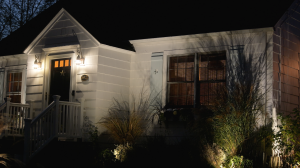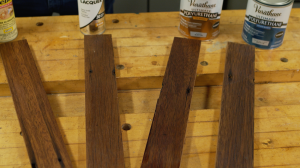How to Remove Carpet Stains
Whether your carpet is new or old, first aid for carpet spills and stains is pretty much the same. The first rule is to act quickly. The longer a stain sits, the more difficult it is to remove. The second thing to remember is that not all stains are created equally. You should use a cleaning technique that is specific to the type of stain you are removing.
1. Grease stains
- Ron began his demonstration with a nasty grease stain that he showed us how to remove.
- The first step is to begin with a commercial cleaning fluid. Ron saturates a cloth.
- Ron said it is important to pat and not rub. He started at the outside of the spot and worked his way toward the center.
- When Ron got to the point where there was almost nothing transferring to the cloth, he was ready to go to his second solution.
- The second solution for this particular stain was lukewarm water and a small amount of liquid dishwashing detergent -- about one teaspoon in every quart of warm water. Too much soap can be a bigger problem than not enough because if all the soap is not removed, it will actually attract more dirt.
- Ron basically repeated the same process over again, although there was not as much stain to be removed this time because he had already removed most of it.
- Last, he switched to just plain cold water. This final step was to rinse the detergent out of the carpet.
- Ron took several layers of paper towel, and placed them on top of the wet spot.
- He added some weight on top, and then left it to dry overnight.
2. Ketchup stains
- The steps and solutions for removing ketchup are different than they are for grease.
- The first solution for a ketchup stain is the same detergent solution used for the second step of the grease stain. Once again, Ron blotted the stain and started from the outside moving toward the center.
- When Ron got down to the point where there was very little transfer from the carpet stain to the cloth, he switched to solution number two.
- The second solution was a half-cup of ammonia in a quart of warm water. He continued blotting with the new solution.
- For the third solution, Ron poured two cups of vinegar into one quart of water and followed the same steps once again.
- Finally, Ron rinsed the carpet with clean, warm water. He then put paper towels on the top of this stain just as he had on the previous one, added weight and let all of it dry for a couple of hours.
RESULTS:
Ron returned to his stains to see how well they had come out. First, where the grease stain was, the carpet was almost completely clean. Next, he checked on the ketchup stain. There was still a very slight pink tinge, which meant he probably could have spent a little more time on that one.
The most important thing to remember when it comes to getting spills and stains out of carpets is to use solutions that are stain specific. You'll need different cleaning materials for different spills and, as Ron demonstrated, grease is handled differently from ketchup. A good stain-removal chart is available from most carpet manufacturers or you can visit www.carpet-rug.com
Blog Articles
Budget-Friendly Staircase Updates You Can Do Yourself
Sometimes, the smallest details can make the biggest difference in a home. A mismatched newel post and railing can detract from the overall aesthetic of a space. Luckily, updating this feature can be a relatively simple DIY project, often requiring only a change of the newel post cap. Brian walks you through this project in the video!
Create a Safer Home with Landscape Lighting
When it comes to creating a stunning first impression and enhancing curb appeal, landscaping plays a crucial role. During the day, your landscaping, painting, and hardscaping efforts shine brightly. However, as night falls, your beautiful home may disappear into the darkness, losing its charm and potentially posing safety concerns. The solution? Landscape lighting!
How to Protect Unfinished Wood
Many people are unsure how to protect unfinished wood. Perhaps you've bought a used piece of furniture, sanded it down, and revealed its beautiful wood grain. Now, you want to preserve its natural beauty without painting it. What should you use? In this blog post, we’ll guide you through your options to help protect and showcase your wood piece.





